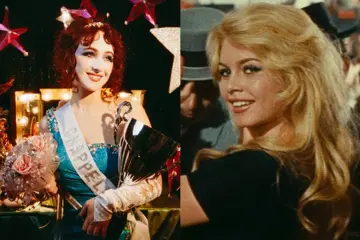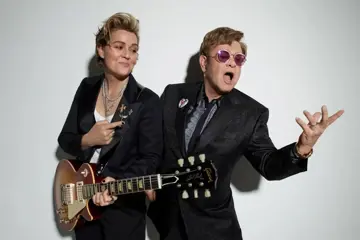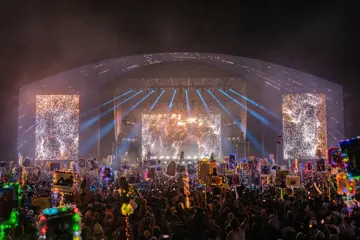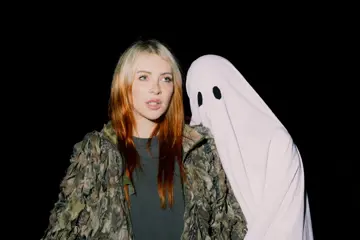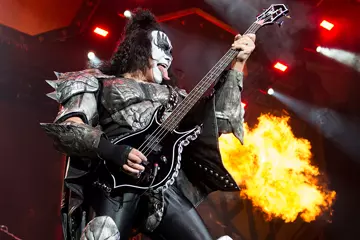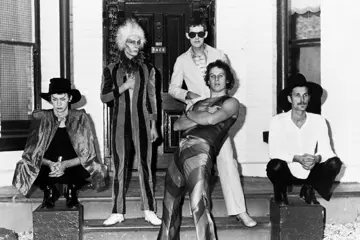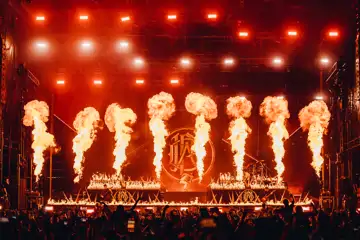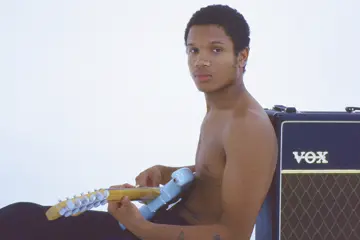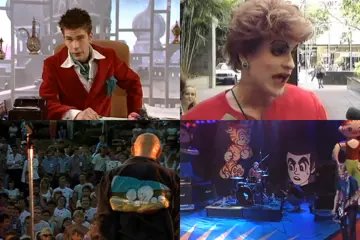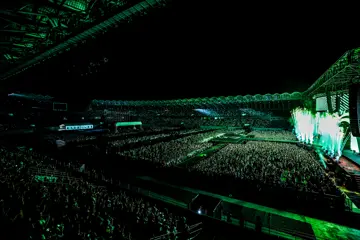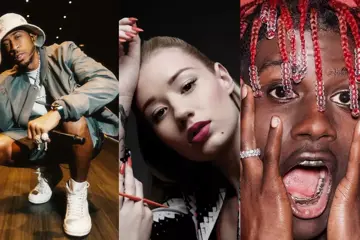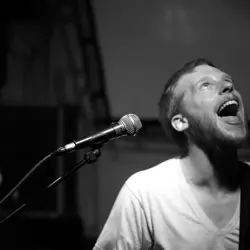 Kevin Devine
Kevin DevineBy now we are all used to the fact that crowd funding campaigns are quite a common step in the creation of new art these days. The success of these campaigns can arguably also say something about the fanbase and quality of the artist in question as well. Kevin Devine tried it, and to say he succeeded in his campaign is a serious understatement. The result is two brand new albums, being released locally by an up and coming Australian label and Killyourstereo.com got the lowdown from Devine on all of it.
What was your reaction to the success of your Kickstarter campaign and what are your thoughts on the Kickstarter idea in general, as it seems to becoming more of a regular vehicle for artists these days?
I was legitimately shocked when the campaign did as well as it did – I didn’t expect that. I thought we’d have a puncher’s chance at hitting the $50K goal over 45 days. To say it exceeded my wildest expectations would be a gross understatement. I think it can be a pretty great levelling device against the more narrow, traditional record/movie/publishing/etc. model, and, like anything else, it can also be abused incorrectly. As an alternative means of funding and executing a project, though, on its face, I think it’s more good than bad.
Since you more than doubled your target, did you think “Sweet, time to buy a Bentley” or something a little more artistically focussed than that?
(laughs) – not exactly. What I think the extra money allowed us to do was not cut corners in the development and execution of the albums at any point along the chain, from writing to pre-production to studio scouting to tracking to mixing to mastering to art design to touring. It let us move forward, which is a pretty amazing thing when you consider the records were self-released. My career actually GREW through the Kickstarter, which is pretty incredible.
What made you decide to do two records, and split them in the way you did?
I thought the two record thing was a neat way to justify to use of the crowd-funding model, and also, a cool way to highlight the break from the traditional structure, as very few – possibly no - labels would have let me do that, and given me $100K to do it with, at this point in my career. I thought I was maybe particularly well-suited to do it because I write and perform a few pretty disparate kinds of music, so it felt like a good creative stretch, a challenge. I also felt like using two totally different producers, studios, and groups of musicians on two different coasts would push the records even further apart.
What made you choose the particular producers you did for the records, and how were the individual experiences of working with each of them? (I mean, come on, Jesse Lacey? Awesome.)
Jesse & I have been friends and collaborators for more than 10 years now, and have always talked about doing something like this – he’s been threatening to produce a KD&GDB album since at least 2006, I bet. It felt like the perfect time to make good on that threat, in particular given his schedule, the developmental point our band was at (namely, we’d gotten pretty good at loud pop music with bursts of chaos & volume), and the kind of record we wanted to make, which spoke to a lot of Jesse’s strengths – obviously, he is a guy who knows his way around loud rock music.
Rob had made my 2006 record Put Your Ghost To Rest, and a couple of singles since – he also mixed 2011’s Between The Concrete & Clouds and the 2nd Bad Books record, so we’re also pretty frequent collaborators. I love working with him – he pushes me a lot, as an arranger, a singer, a guitar player – he makes me think about chord voicings, and harmony, and is very musical & thoughtful. Our hangs while working are great, wide-ranging conversation, lots of laughs, and I feel like I leave working with him with a richer understanding of how music works.
Each guy felt like the right man for the respective job.
When writing and recording the demos that would eventually become these albums, were you overrun with inspiration for some reason or was it a long, drawn out process of songwriting?
The records were written between Christmas 2012 and first week of March 2013. I felt open creatively, loosened up and emboldened by the audience’s clear directive as expressed through the Kickstarter. I just set up shop every day and went to work, and songs came, and ideas came, and when things got stuck, I’d let them sit and circle back. It was a pretty wonderful, fertile, adrenalised experience. I was in love with the songs and felt very confident going in to make the records, I believed in each and knew my co-conspirators would fill in any holes I’d left, and make things better and fuller.
In a similar vein, two albums worth of lyrical content, you must have a lot to say?
I guess so. I like words, and building things out of them. I like trying to figure out what’s happening with me, with people, with the world, and words help. I tend to gravitate toward that style of songwriting. Though I also feel the lyrics on these records are more focused and concise and less florid than on some of my older albums.
Will the live shows be split in a similar way to the records or do you have some other ideas?
The first US tour was Bubblegum heavy, more of a punk rock tour, with “Little Bulldozer” in there every night; the first UK/EU tour was solo acoustic, so I did a blend of the two, pretty evenly. We’re planning a Bulldozer tour in the fall in the States, and have a bunch of support stuff this spring & summer, which will probably also lean into Bubblegum as they’re louder shows. But we’ll balance those books later this year and give each records its day in the sun.
Having had a career as long as you have, and obviously recognising the need to employ tactics like Kickstarter etc, would you say it is easier or harder to be an independent musician these days, and why?
I think it’s never been easier to make and release music, but it’s probably never been harder to claim a corner of the market and make a living doing it. There are a million reasons why, but predominantly I think it’s got to do with the constantly-shrinking profits available through selling recorded music, the glut at the bottleneck where there is money available – namely via touring & licensing music to TV/ads/films, and the sheer volume of music available to be easily accessed & casually discarded by the listening public. That said, touring is mechanically a lot easier, with smart phones & laptops etc., than it was when it was maps & payphones. So it moves in all directions.
The new records are being released via Hobbledehoy here in Australia, you obviously have Australia on your mind, what are your plans for the relationship between yourself and our country and what made you choose Hobbledehoy?
Tom & Hobbledehoy come highly recommended by a bunch of people I respect, other bands and labels, and they seemed philosophically aligned with the kind of ground war, one fan at a time, ethics in business approach I’ve built my career around. I’m happy he was keen to do it and feel great about working together. I hope to get back over and play some shows for you guys, maybe early next year. We’re working on it.
Let’s end with the hardest question, which record is your favourite?
It’s hard to pick. My mood changes all the time, some days it’s one, then it’s the other. Today’s a Bubblegum day. Tomorrow probably won’t be. It’s a good problem to have.



